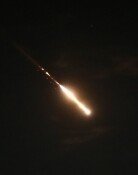The reversal of interest rates
The reversal of interest rates
Posted June. 15, 2018 09:27,
Updated June. 15, 2018 09:27

During Korea’s industrialization during the 1970s to 1980s, it was quite common to see interest rates in Korea exceeding 20 percent. It was a time of strong growth and inflation, hence sky-high interest rates. For companies, it was their capability and privilege to attract low-interest loans from wealthier countries. At that time, it was the Ministry of Finance that drove government-run banks, the channel for raising foreign currency. Back then, foreign currency was affiliated with collusive ties between the government and businesses. The reversal of interest rates between the United States and Korea was unimaginable.
The Federal Reserve’s key rate hike to 2.0 percent from 1.75 percent has resulted in a gap as much as 0.5 percent with Korea’s interest rate. Korea’s key rate has remained unchanged at 1.50 percent since the Monetary Policy Committee at the Bank of Korea announced a hike in November last year. Considering that the reversal of the interest rates can be viewed as a reflection of a stronger Korean economy, one may marvel at how times have changed. Yet such stronger fundamentals were not earned easily, as we learned lessons at a valuable price, overcoming the financial crises and opening our capital markets.
Meanwhile, the interest hike of the United States represents the economy’s confidence of recovery. The Fed has signaled two more hikes on the way. A recovery is good news for the United States, but the interest rate hike sound an alarm to Argentina, Brazil, Turky, Indonesia and other emerging economies, as they fear it could spark capital flight from the economies to the United States.
A few years back, Korea might have shared such concerns and voiced need to raise interest rates, but the situation is different now. The movement of capital no longer stems from interest rate difference. In addition, a stronger dollar could be more advantageous for exporters. The Bank of Korea is also wary of economic indicators, which hint on recession. Higher rates would also increase household debts, known as a potential detonator of the Korean economy. Still, we cannot afford to keep the interest rates unchanged. By year-end, Korea’s gap with the United States would bridge apart as far as 1 percentage point. It is questionable of whether Korea’s fundamentals are strong enough to withhold the gap. When should Korea raise the rates? That is up to the Bank of Korea to agonize over.
Sung-Won Joo swon@donga.com







